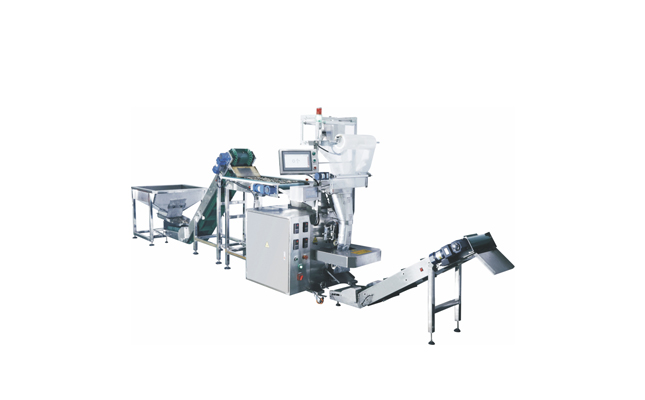
Date | 2023-05-15 22:02:46
As modern industries continue to expand and evolve, the need for efficient and reliable packaging solutions has become more pressing than ever. The rise of e-commerce and global trade has further emphasized the importance of quality packaging, as products must now withstand the rigors of long-distance shipping and handling. To meet these demands, semi-automatic packaging machine manufacturers have emerged as key players in the industry, offering a range of innovative solutions that enable businesses to streamline their packaging processes and boost productivity.
Semi-automatic packaging machines are designed to automate specific packaging tasks, such as filling, sealing, labeling, and palletizing. Unlike fully automatic machines, which require minimal human intervention, semi-automatic machines require an operator to load and unload products and initiate the packaging process. This makes them a more cost-effective option for smaller businesses or those with lower production volumes.
One of the key benefits of semi-automatic packaging machines is their flexibility. These machines can be customized to meet the specific needs of each business, ensuring that the packaging process is tailored to the product being packaged. This level of customization enables businesses to achieve greater efficiency, reduce waste, and improve overall product quality. Additionally, semi-automatic machines can be easily integrated into existing production lines, further streamlining the packaging process.
Another advantage of semi-automatic packaging machines is their ease of use. Operators can quickly learn how to operate these machines, reducing the need for extensive training. This simplicity also makes it easier to troubleshoot issues, reducing downtime and increasing productivity. Furthermore, semi-automatic machines are generally easier to maintain than fully automatic machines, as they have fewer complex components and require less frequent maintenance.
Semi-automatic packaging machines are available in a variety of configurations, each suited to different packaging needs. For example, vertical form-fill-seal machines are ideal for packaging products such as granules, powders, and liquids, while horizontal form-fill-seal machines are better suited to packaging solid products. Other common types of semi-automatic packaging machines include vacuum packaging machines, shrink wrapping machines, and stretch wrapping machines.
When selecting a semi-automatic packaging machine manufacturer, it is important to consider several factors. These include the manufacturer's experience and reputation, the quality of their products, and their after-sales service and support. It is also important to ensure that the machine selected is compatible with existing production equipment and that it meets all relevant safety standards.
In conclusion, semi-automatic packaging machine manufacturers have become essential partners for businesses seeking to improve their packaging processes. These machines offer a cost-effective and flexible solution that can be tailored to the specific needs of each business. As industries continue to evolve, the demand for efficient and reliable packaging solutions will only increase, making semi-automatic packaging machines an invaluable asset for businesses of all sizes.Furthermore, the adoption of semi-automatic packaging machines can also help businesses to reduce their environmental impact. By minimizing packaging waste and optimizing packaging materials, businesses can reduce their carbon footprint and contribute to a more sustainable future. Semi-automatic machines can also help to reduce energy consumption, as they are typically more energy-efficient than manual packaging processes.
In addition to their environmental benefits, semi-automatic packaging machines can also improve workplace safety. By automating certain packaging tasks, businesses can reduce the risk of workplace injuries caused by repetitive or heavy lifting. This can not only benefit employees but also reduce healthcare costs and increase productivity.
As technology continues to advance, semi-automatic packaging machines are also becoming increasingly sophisticated. For example, some machines now feature digital controls and sensors that enable real-time monitoring and adjustment of packaging processes. This level of automation not only improves efficiency but also enables businesses to identify and address issues more quickly, reducing the risk of product defects and recalls.
In conclusion, semi-automatic packaging machine manufacturers are playing a critical role in the modern packaging industry. Their innovative solutions enable businesses to improve efficiency, reduce waste, and improve product quality, all while reducing their environmental impact and promoting workplace safety. As industries continue to evolve, the importance of reliable and efficient packaging solutions will only continue to grow, making semi-automatic packaging machines an essential investment for businesses of all sizes.
